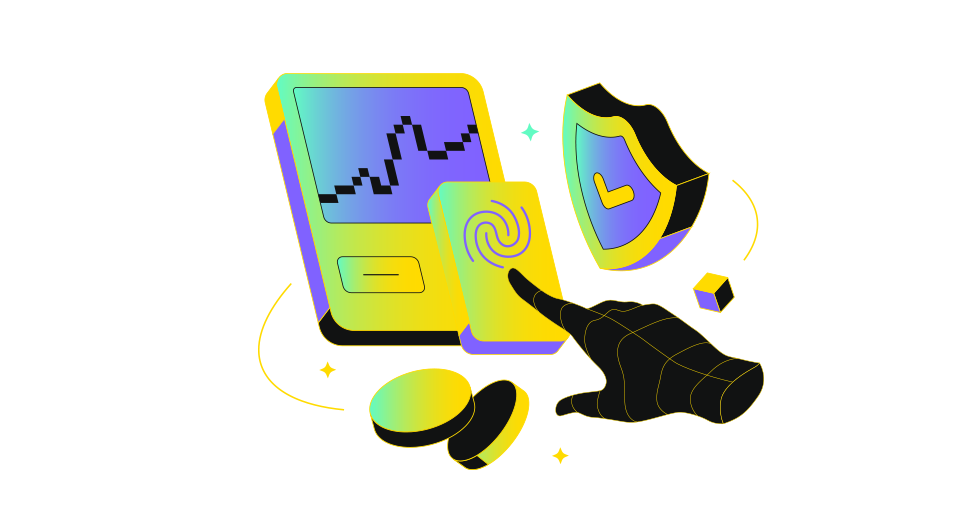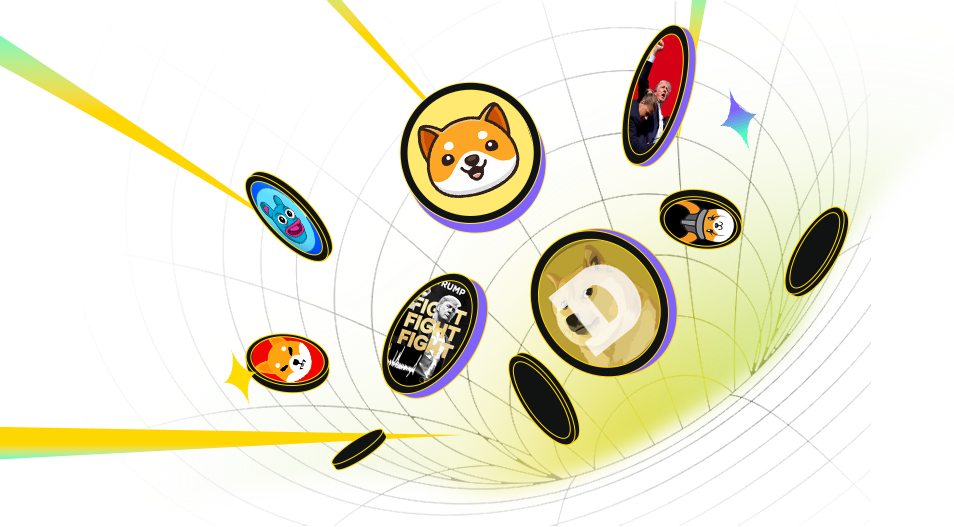線上客服
客服團隊
剛剛
親愛的 LBank 用戶
我們的線上客服系統目前遇到連線故障。我們正積極修復這一問題,但暫時無法提供確切的恢復時間。對於由此給您帶來的不便,我們深表歉意。
如需幫助,您可以透過電子郵件聯繫我們,我們將盡快回覆。
感謝您的理解與耐心。
LBank 客服團隊
What if you could buy a small share of a skyscraper in London or own a fraction of a famous painting, all without a bank, broker, or lawyer?
That’s exactly what tokenisation of real-world assets (RWAs) makes possible.
Tokenisation is the process of converting physical assets, such as real estate, art, gold, stocks, or even carbon credits, into digital tokens on a blockchain. These tokens represent ownership, can be traded globally, and allow people to invest in assets that were once out of reach.
In this guide, we’ll explore:
● Why Tokenisation Matters
● The technical mechanics behind tokenising assets
● The system architecture that makes it possible
With the surge of institutional interest and new blockchain standards in 2025, RWA tokenisation is becoming one of the biggest trends defining the next era of decentralised finance. Let’s break it down in simple terms and understand how it really works.
A token in this sense is a digital representation of value or ownership that lives on a blockchain. For example, a share of a property, a piece of artwork, or a commodity can become a token you can trade or own.
When you tokenise an asset, you are essentially creating a digital version of it on a blockchain. Each token acts like a certificate of ownership or a claim on a specific share of that asset.
For example:
● A house worth ₦100 million could be divided into 100,000 tokens.
● Each token would represent ₦1,000 worth of ownership.
● Investors can buy, sell, or trade these tokens just like shares.
This process allows fractional ownership, where many people can co-own the same asset without dealing with traditional middlemen.
It helps to know the difference between two major types of tokens when talking about real-world asset tokenisation:
● Fungible tokens: These are interchangeable, identical units. Think of them like currency; one unit is the same as any other unit of the same kind.
● Non-fungible tokens (NFTs): These are unique items or units, each with a distinct identity or value. One non-fungible token is not the same as another.
Different token standards serve different use cases:
|
Token Type |
Standard |
Use Case |
|
Fungible Tokens |
ERC-20 |
Fractional ownership or investment units |
|
Non-Fungible Tokens (NFTs) |
ERC-721 |
Unique assets like individual properties or artworks |
|
Semi-Fungible Tokens |
ERC-1155 |
Mixed ownership assets or collections |
These standards ensure tokens are interoperable, meaning they can be traded or used across different wallets and platforms.
In tokenising real assets:
● If you divide a large asset into many identical shares (e.g., many people owning a fraction of a building) you might use fungible tokens.
● If you represent a single, unique asset (e.g., a particular piece of art, or a specific rare item) you might use non-fungible tokens (NFTs).
Tokenisation is one of the fastest-growing use cases in Web3. It offers several advantages that traditional finance can’t match:
Tokenising an asset involves both technical and legal steps. Here’s a simplified overview:
● Full ownership
● Fractional ownership
● A share of revenue or profit
Here are the systems that make this process possible. Each plays a key role in bridging the gap between the real world and the blockchain, ensuring that the tokenisation process remains transparent, compliant, and secure.

This is the first foundational layer when tokenising a real-world asset:
● Asset identification & valuation: The issuer identifies a real-world asset (for example, a piece of real estate, a unique artwork, a commodity) and carries out a valuation, legal title search, audits, etc.
● Legal wrapper / special purpose vehicle (SPV) / trust/fund structure: Often, a legal entity (such as an SPV) is created or a trust/fund is set up that holds the underlying asset and issues rights to it. This ensures the asset is properly ring-fenced, and investor rights are defined.
● Token issuance rights created: The legal entity becomes the issuer of tokens. Smart contracts will be used to represent tokens, but the legal framework ensures that holding a token corresponds to some enforceable claim or right against the underlying asset.
○ KYC/AML compliance: Ensuring token holders are verified, checking anti-money-laundering, sanctions lists, etc.
○ Jurisdictional issues: Different countries have different rules about property, securities, asset rights, and custodian duties.
○ Legal enforceability: Ensuring that the off-chain legal rights map cleanly onto the on-chain token.
○ Asset custody & trust: Ensuring the underlying asset is properly secured, insured, and controlled.
Once the legal framework is in place, the digital representation (tokens) can be issued on chain:
● Token standards:
○ For fungible tokens (many identical units), standards such as ERC‑20 are common.
○ For non-fungible or semi-fungible tokens (unique assets or fractionalised unique assets), standards such as ERC‑721 or ERC‑1155 may apply.
● Fractional ownership architecture: If an asset is too large for one investor, it can be broken down into many tokens, each representing a fraction of ownership. The architecture might include:
○ A token contract (minting, transfers)
○ A governing contract (defines rights: voting, yields, distributions)
○ A treasury or yield distribution contract (holds underlying yield and distributes to token-holders)
● Token economics/governance rights/distributions: The system must handle how yield (e.g., rent from real estate) flows through to token-holders, how governance decisions (maintenance, asset sale) are made, and how buy-backs or redemptions happen.
● Challenges: Ensuring token holders’ rights are enforceable; designing governance that prevents token-holder disadvantage; handling upgrades and contract changes safely.
Since the asset is real-world, many important data points live off-chain:
● Need for oracle services: Data such as valuations, maintenance status, yield (e.g., rent payments), and collateral status must travel from the real world into the smart contract in a trustworthy way.
● Oracle architecture aspects:
○ Who provides the data (trusted third-parties, decentralised oracle networks)
○ How often updates happen (latency matters: outdated data can cause mismatches)
○ Integrity & reliability: ensuring the data hasn’t been manipulated; designing fallback mechanisms for oracle failure
● Example: A real estate property yields monthly rent. The rent data is posted off-chain, and an oracle feeds that into the token system, triggering a distribution to token-holders.
● Challenges: Latency, oracle centralisation risk, bridging trust between real asset data and on-chain code, and validation of off-chain events.
This component handles the interface between token-holders, the underlying asset, and the markets where tokens trade:
● Custody of underlying asset: Even though tokens exist on-chain, the underlying asset (property, artwork, commodity) needs secured custody, trustee oversight, insurance, etc.
● Settlement mechanics & redemption: If token-holders wish to redeem for the underlying asset or claim yields, there must be defined processes. E.g., buy-back, exit event, asset sale.
● Secondary market/liquidity: Tokens should ideally trade on secondary markets (decentralised exchanges, regulated tokenised-asset platforms) to provide liquidity.
● Challenges: Ensuring the link between token and asset remains intact during transfers, dealing with asset illiquidity (if the underlying is hard to sell), and regulatory limitations on trading depending on jurisdiction.
Tokenised real-world assets require governance and compliance built into the system:
● On-chain governance: Token-holders may need voting rights on decisions such as asset maintenance, sale, and refinancing. Smart contracts can embed proposals/voting modules.
● Compliance functions: Smart contracts should include features like whitelist/blacklist, freeze/unfreeze transfers, regulatory reporting hooks (so issuer can report to regulators.
● Investor rights handling: Dividend or yield distributions, redemption rights, claim to underlying asset in the event of default, and reporting obligations on performance.
●Challenges: Keeping governance decentralised but manageable, ensuring compliance doesn’t overly restrict usability, and interoperability across jurisdictions of investor rights.
Finally, to build trust and robustness, the architecture must include risk mitigation practices:
● Smart contract security practices: Audits (third-party), use of multi-sig wallets, upgradeable proxy patterns (when needed), and formal verification if possible.
● Legal/operational risks: If the underlying asset fails (e.g., property doesn’t generate yield), if custody fails, or if the oracle is compromised, each of these is a risk.
● Liquidity risk: If tokenised asset becomes illiquid, token-holders may not be able to exit. Architecture must handle fallback (redemption, buy-back, asset sale).
● Technical risks: Contract bugs, re-entrancy attacks, governance exploits, peg failure (token value diverges from asset value).
● Mitigation solutions: Multi-sig custodians, insurance or reserves, on-chain monitoring/alerts, fallback mechanisms in smart contracts, regulatory oversight and legal enforceability reading.
Tokenising real-world assets is no longer a theory; it’s being tested and adopted across multiple industries. From real estate to art and finance, several pilot projects and platforms are already proving how blockchain can reshape asset ownership and transfer.
Let’s imagine you own an apartment complex worth $1 million. You want to raise funds or allow investors to buy into it.
Here’s how tokenisation would work:
This creates a transparent, global marketplace for real estate investment, all on-chain.
Tokenising real-world assets is one of the most useful ways to connect traditional finance with blockchain. It’s not just about technology; it changes how people own, trade, and trust value across the world.
It gives everyday people a chance to invest in things that used to be only for big companies. It also helps businesses raise funds more easily, stay transparent, and manage assets better.
As the systems and rules improve, tokenising real-world assets could become one of the main ways people use blockchain, turning physical things into digital opportunities for everyone.
Disclaimer: The content created by LBank Creators represents their personal perspectives. LBank does not endorse any content on this page. Readers should do their own research before taking any actions related to the company and carry full responsibility for their decisions, nor can this article be considered as investment advice.




剛剛
親愛的 LBank 用戶
我們的線上客服系統目前遇到連線故障。我們正積極修復這一問題,但暫時無法提供確切的恢復時間。對於由此給您帶來的不便,我們深表歉意。
如需幫助,您可以透過電子郵件聯繫我們,我們將盡快回覆。
感謝您的理解與耐心。
LBank 客服團隊